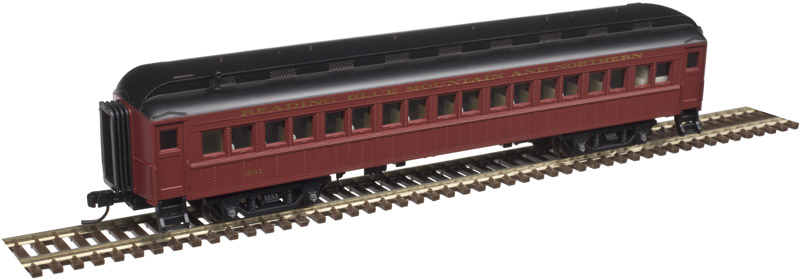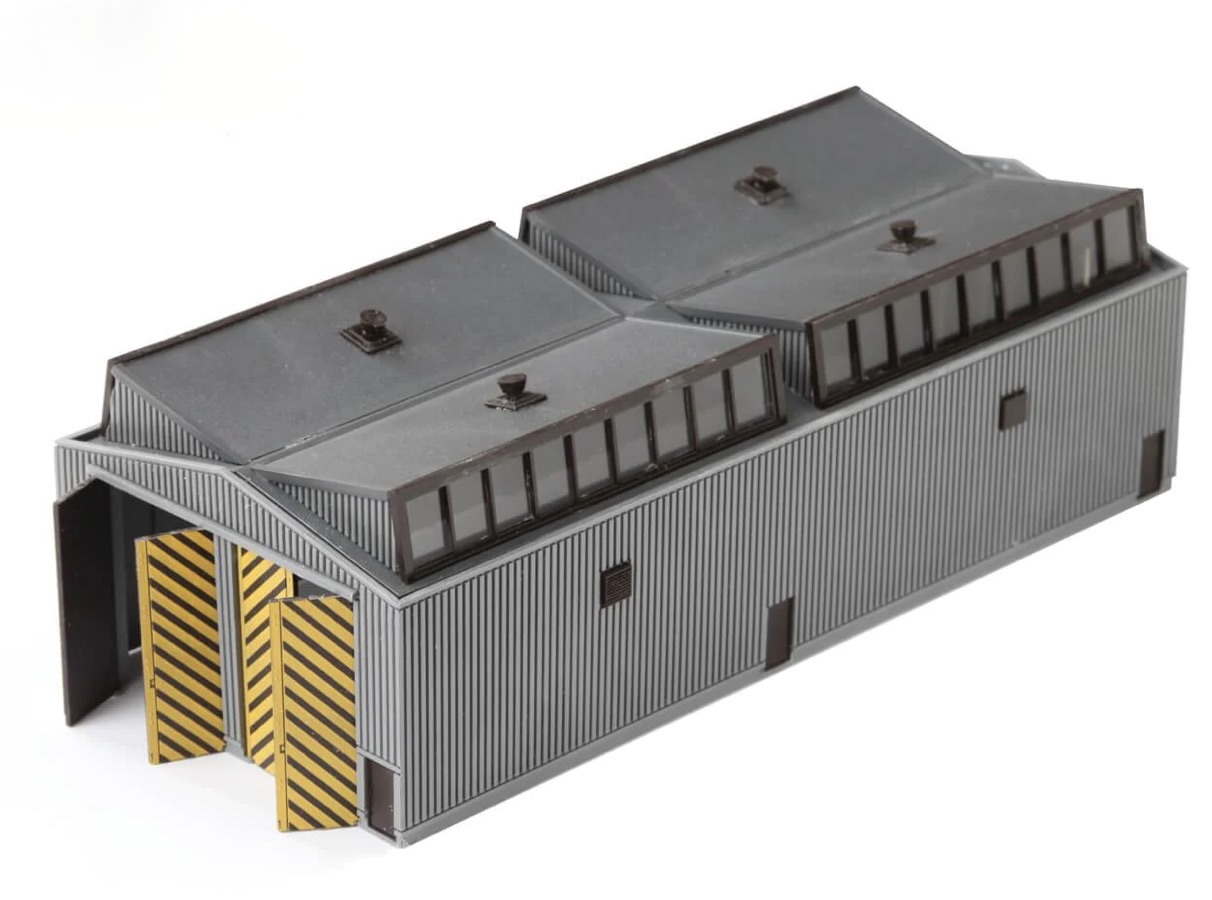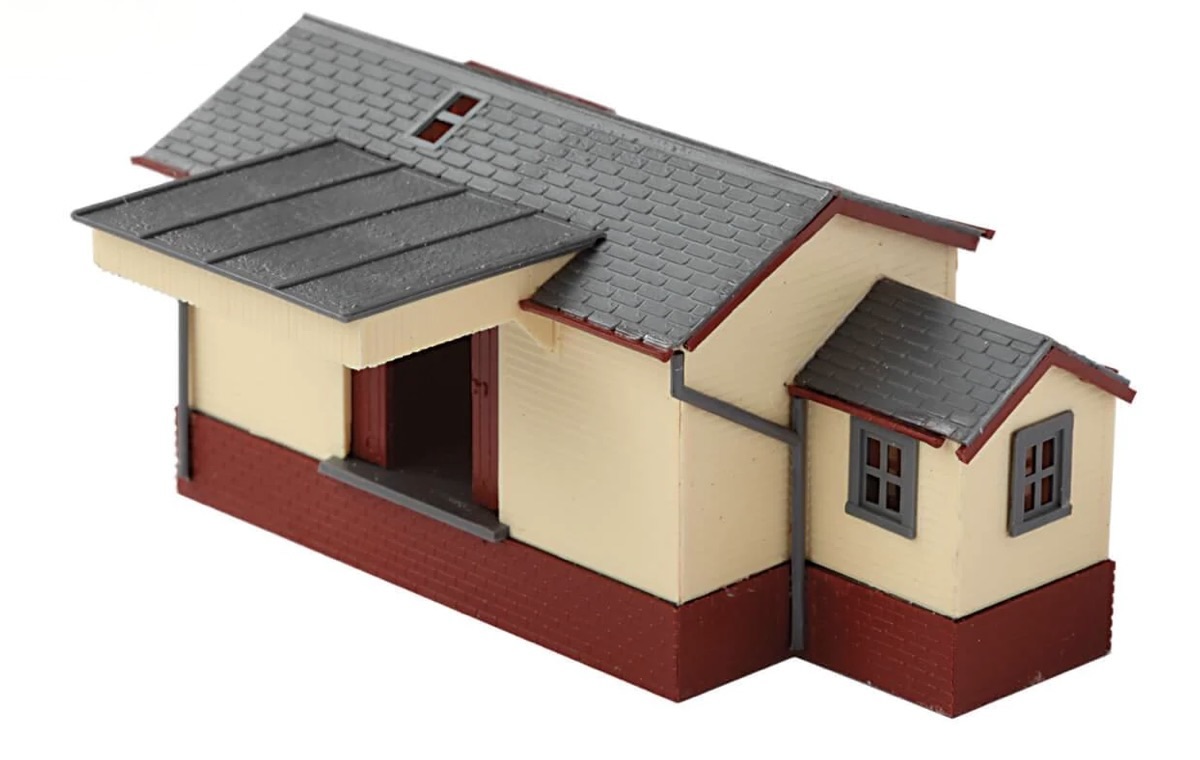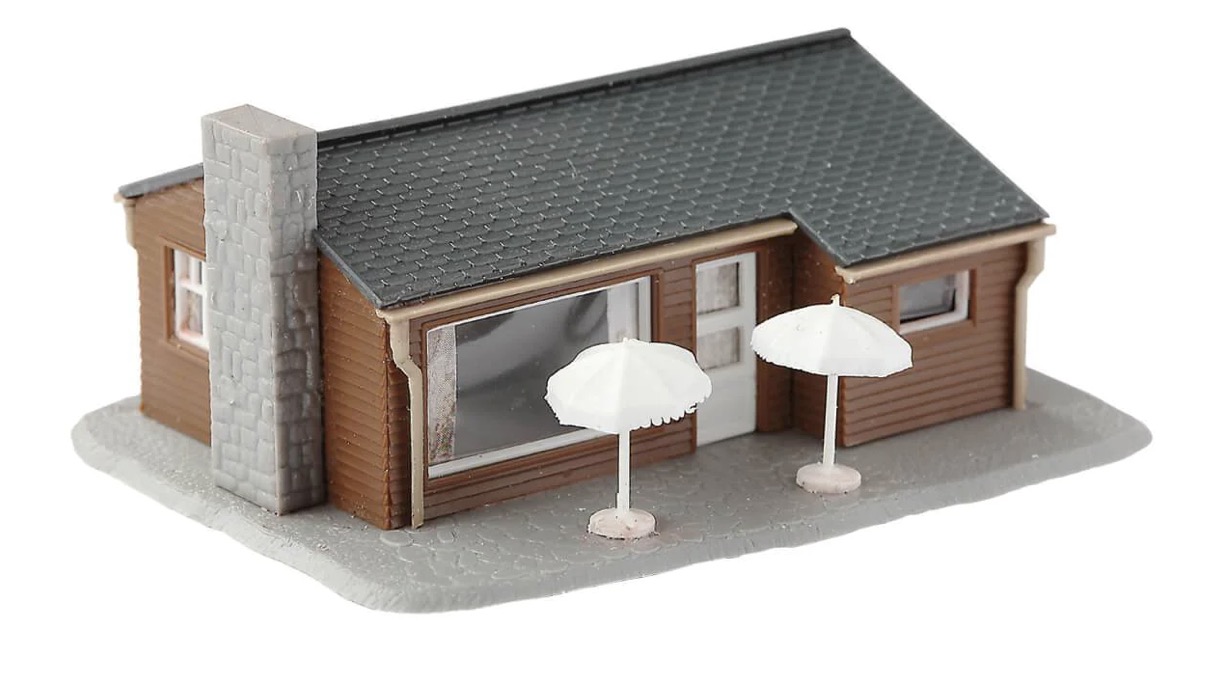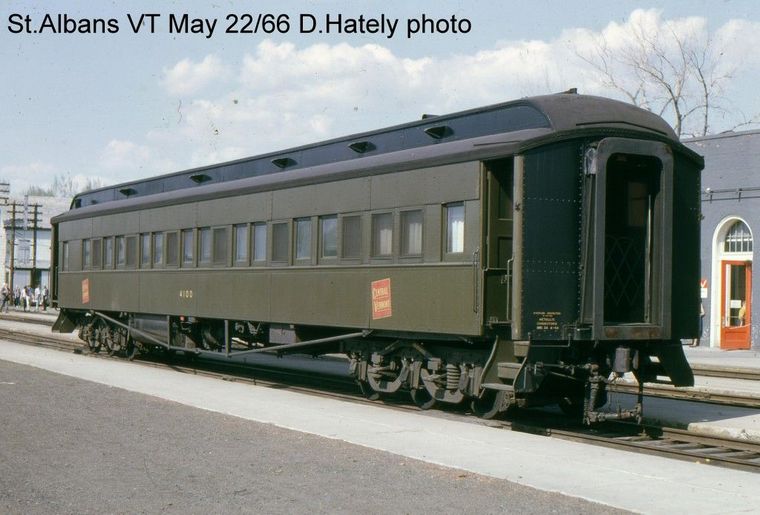Specific Item Information: COACHES #301, #302, #303 & #304 AND 60' OBSERVATION CAR #5
• Based upon C&NW and CNJ prototypes
• Full scale dimensions and details
• All cars include separately applied window glazing, diaphragms and roof vents
• Observation car includes separately applied end railing details and a drumhead.
• Detailed interiors (excluding baggage car)
• AccuMate® operating knuckle couplers
Prototype History: Heavyweight refers to early 20th century cars built before the late 1930s. They were usually of riveted steel construction with 6 wheel trucks (not always) and often (not always) had large clerestory (learn more about clerestory roofs in our blog: What is a Monitor Roof Passenger Car?) or arch roofs that tapered or curved at the ends. Heavyweights were built with a heavy under frame to hold the car body. The floor was often of poured concrete, which helped give these cars a smoother ride than older wooden-body cars. The rest of the car was built on top of the frame and was structurally irrelevant. Heavyweight passenger cars weigh around 1 ton per foot of length. So a 85' car weighs in the area of 85 tons. Some railroads 'rebuilt' older heavyweight cars with new low profile roofs, thermopane windows, and flashy paint schemes to match the newer lightweights.
Road Name History: The RBMN was the result of the 1990 expansion and re-organization of the Blue Mountain & Reading Railroad. At first, locomotives were lettered for Reading Blue Mountain & Northern but this was later simplified to Reading & Northern. For most purposes, the company uses the two names interchangeably. Today the RBMN operates 300 miles of line in eastern Pennsylvania (it’s about the length of the Clinchfield or Toledo Peoria & Western.)
The mainline runs north from Reading through Port Clinton, Tamaqua, Jim Thorpe, to Pittston. Branches from Pittston reach Scranton and Mehoopany. There is also a dense network of branches to the west of the mainline in Schuykill County. This is Pennsylvania’s anthracite region and while the golden age of anthracite for home heating is well behind us, it still has important industrial uses and RBMN proudly calls themselves the Road of Anthracite on their Reading influenced black diamond logo.
RBMN has continued the tradition of tourist operations begun by their predecessor and continues to roster the ex-GM&N Pacific and ex-Reading Northern. A former Canadian Pacific 4-6-0 has also been added to the roster. As of this writing, the freight locomotive fleet includes two SD50M’s, two SW8’s, two SW8m’s, an SW7, two SW1500’s, three SD38’s, four GP39RN’s, nine SD40-2’s, and three SD50’s. We will have more Reading & Northern photos with tomorrow's Railroad of the Day.
The mainline runs north from Reading through Port Clinton, Tamaqua, Jim Thorpe, to Pittston. Branches from Pittston reach Scranton and Mehoopany. There is also a dense network of branches to the west of the mainline in Schuykill County. This is Pennsylvania’s anthracite region and while the golden age of anthracite for home heating is well behind us, it still has important industrial uses and RBMN proudly calls themselves the Road of Anthracite on their Reading influenced black diamond logo.
RBMN has continued the tradition of tourist operations begun by their predecessor and continues to roster the ex-GM&N Pacific and ex-Reading Northern. A former Canadian Pacific 4-6-0 has also been added to the roster. As of this writing, the freight locomotive fleet includes two SD50M’s, two SW8’s, two SW8m’s, an SW7, two SW1500’s, three SD38’s, four GP39RN’s, nine SD40-2’s, and three SD50’s. We will have more Reading & Northern photos with tomorrow's Railroad of the Day.
Brand/Importer Information: In 1924 Stephan Schaffan, Sr. founded the Atlas Tool Company in Newark, New Jersey. In 1933 his son, Stephan Schaffan, Jr., came to work for his father at the age of sixteen. Steve Jr. built model airplanes as a hobby and frequented a local hobby shop. Being an enterprising young man, he would often ask the owner if there was anything he could do to earn some extra spending money. Tired of listening to his requests, the hobby-store owner threw some model railroad track parts his way and said, "Here, see if you can improve on this".
In those days, railroad modelers had to assemble and build everything from scratch. Steve Jr. created a "switch kit" which sold so well, that the entire family worked on them in the basement at night, while doing business as usual in the machine shop during the day.
Subsequently, Steve Jr. engineered the stapling of rail to fiber track, along with inventing the first practical rail joiner and pre-assembled turnouts and flexible track. All of these products, and more, helped to popularize model railroading and assisted in the creation of a mass-market hobby. The budding entrepreneur quickly outgrew the limitations of a basement and small garage operation. Realizing they could actually make a living selling track and related products, Steve and his father had the first factory built in Hillside, New Jersey at 413 Florence Avenue in 1947. On September 30, 1949, the Atlas Tool Company was officially incorporated as a New Jersey company.
In 1985, Steve was honored posthumously for his inventions by the Model Railroad Industry Association and was inducted into the Model Railroad Industry Hall of Fame in Baltimore, Maryland. In addition, Steve was nominated and entered into the National Model Railroad Association Pioneers of Model Railroading in 1995.
In the early 1990s, the Atlas Tool Company changed its name to Atlas Model Railroad Company, Inc.
In those days, railroad modelers had to assemble and build everything from scratch. Steve Jr. created a "switch kit" which sold so well, that the entire family worked on them in the basement at night, while doing business as usual in the machine shop during the day.
Subsequently, Steve Jr. engineered the stapling of rail to fiber track, along with inventing the first practical rail joiner and pre-assembled turnouts and flexible track. All of these products, and more, helped to popularize model railroading and assisted in the creation of a mass-market hobby. The budding entrepreneur quickly outgrew the limitations of a basement and small garage operation. Realizing they could actually make a living selling track and related products, Steve and his father had the first factory built in Hillside, New Jersey at 413 Florence Avenue in 1947. On September 30, 1949, the Atlas Tool Company was officially incorporated as a New Jersey company.
In 1985, Steve was honored posthumously for his inventions by the Model Railroad Industry Association and was inducted into the Model Railroad Industry Hall of Fame in Baltimore, Maryland. In addition, Steve was nominated and entered into the National Model Railroad Association Pioneers of Model Railroading in 1995.
In the early 1990s, the Atlas Tool Company changed its name to Atlas Model Railroad Company, Inc.
Item created by: CNW400 on 2023-10-07 11:04:03
If you see errors or missing data in this entry, please feel free to log in and edit it. Anyone with a Gmail account can log in instantly.
If you see errors or missing data in this entry, please feel free to log in and edit it. Anyone with a Gmail account can log in instantly.


